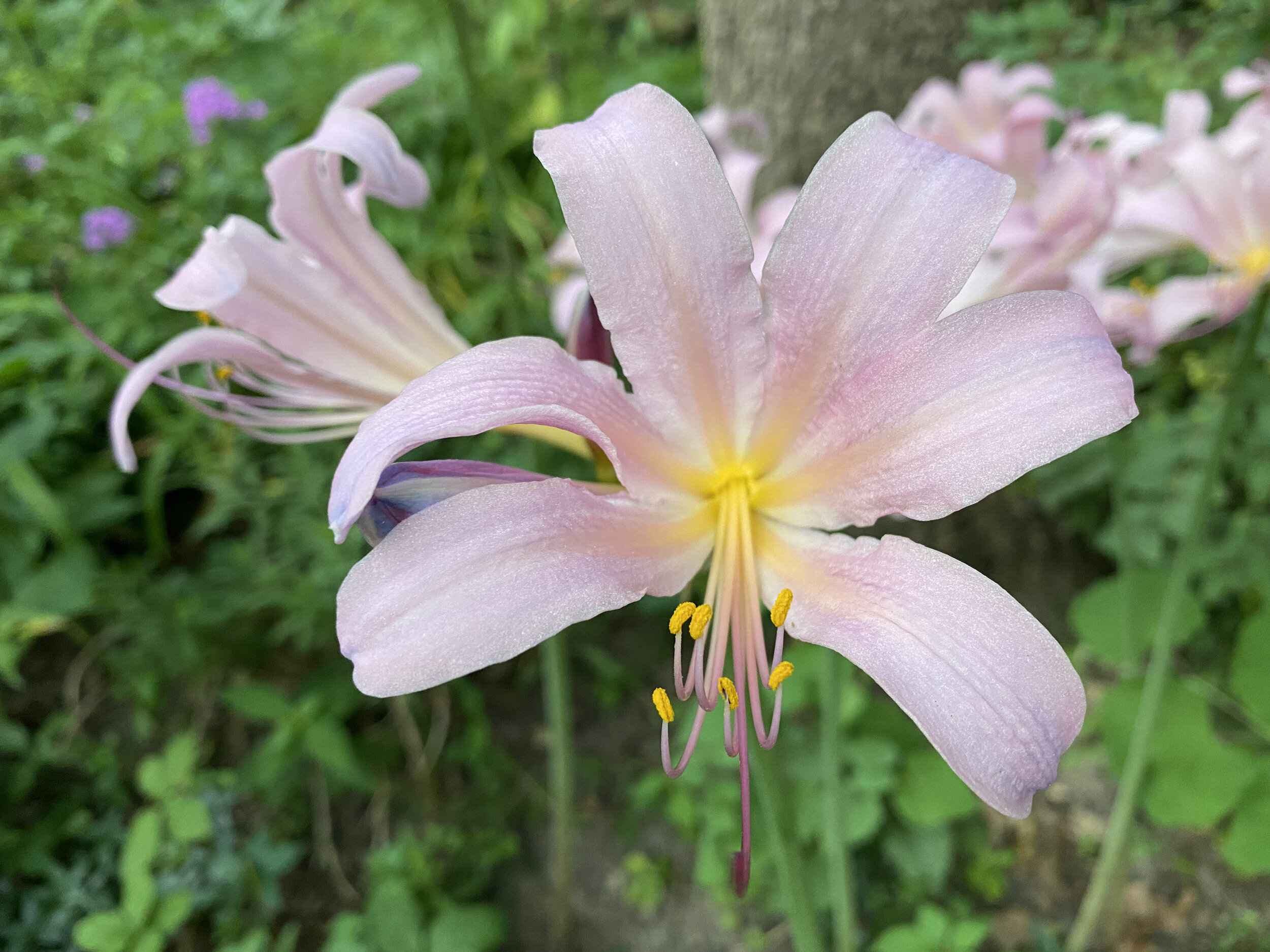Surprise Lilies
/Surprise lilies at the front of my missouri home. (charlotte ekker wiggins photo)
Surprise Lilies
Surprise lily season is almost a month early this year, which is another surprise in itself. Every morning I walk to try to spot the various places these stalks are raising buds. Oh, I planted them in spring; by now I don't remember where.
Surprise lilies, also known as magic lilies, naked ladies, and resurrection lilies, are native to Southeast China, Japan, and Korea. They have been available in the United States since 1880 and I think of them as the north American cousin to tropical Amaryllis. The big difference is that surprise lilies are perennials; once planted, they stay outside re-blooming from year to year.
The surprise lily is named for its habit of blooming in mid-summer, after its leaves have died back. The flowers appear suddenly on naked stems, hence the name "surprise lily" and, where I live, "naked ladies." Helps to raise an eyebrow a la Groucho Marx when you say it.
Surprise lilies are hardy in USDA zones 5-9. They prefer full sun to partial shade and well-drained soil. They are drought-tolerant once established and one of the few plants that bloom through our hot Midwest weather.
To plant surprise lilies, dig a hole that is twice the width and depth of the bulb. Place the bulb in the hole, pointed side up. I add bone meal whenever I'm planting bulbs, a handful per bulb, to give them a good start. Cover bulb with soil. Water the soil well. Forget where you planted them. I am an expert at this step.
Green leaves will grow in spring, collecting sunlight and storing it in the bulbs. Surprise lily greenery will grow for about a month.
Mid-summer, surprise lily flowers will bloom for 2-4 weeks. After the flowers have faded, the stems will die back. The bulbs will go dormant until the following spring.
Surprise lilies make great cut flowers. Their sweet scent can easily fill a room in a few minutes, making them nice flowering gifts.
Cut them early morning when the flowers are still in bud form. I usually add one in bloom so it's clear what the buds will become.
I also have native pink phlox growing in my garden. They are still in bloom when surprise lilies show up so they make a nice combination.
Both Surprise lilies and native pink phlox are pollinator favorites. Bumblebees mine the Surprise lily nectar while getting covered in pollen; butterflies, hummingbirds and hummingbird moths keep the native pink phlox company.
Why Plant Surprise Lilies
If you are looking for a beautiful and unexpected addition to your garden, consider planting surprise lilies for beauty and pollinator food:
The flowers are white or pink and have a sweet fragrance.
The plants can reach a height of 2-3 feet.
The bulbs can live for many years.
Surprise lilies are a good choice for pollinator gardens; bumblebees and moth orchids love them.
They are deer-resistant.
They can be planted among other perennials that fill in around them.
For more gardening, beekeeping, cooking and easy home decor tips, subscribe to Garden Notes.
Charlotte



















